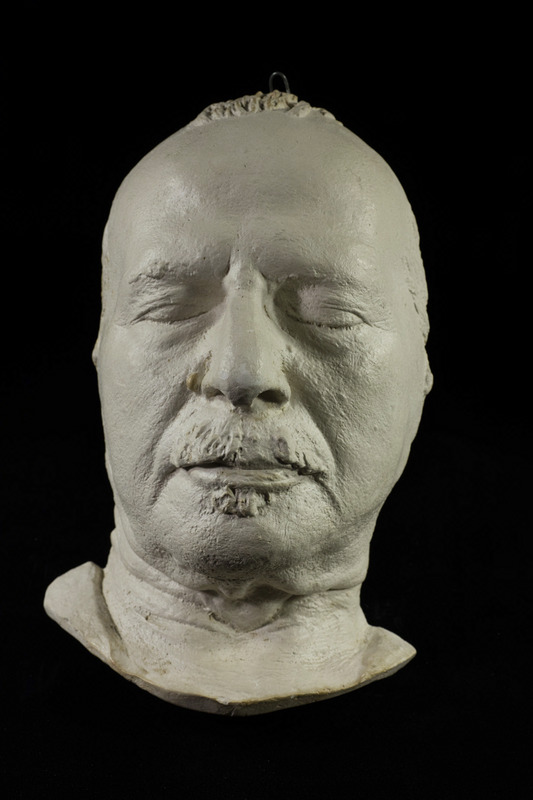Biographical/Historical Information
Death masks are casts taken of a person's face following their death. Casts were often made from wax, clay, or plaster and were primarily used to remember the dead. The process has roots in Egyptian mummification and Mycenean Greek traditions. After the middle ages, death masks were made of prominent figures to be saved for display. Later, casts were taken of unknown corpses for future identification. Death masks were eventually replaced by photography.
Constantin Brunner, born Leopold Wertheimer in 1862 in Altona, Germany, was a philosopher. He studied at the Jewish Teachers Seminary in Cologne and at the Universities in Berlin and Freiburg from 1893 to 1895 with Leo Berg (later Otto Ernst). Brunner then lived with his family in Berlin as an independent academic. Between 1913 and 1930, he lived in Potsdam before he emigrated to The Hague in 1933, where he died in 1937. Since the publication of his main work in 1908, but especially due to his personality, Brunner attracted the spiritually young, as well as intellectuals, politicians and artists, thus creating the “Brunner-Circle”. These friends, who corresponded with him and visited him, made Brunners’ practical stipulation their own. Apart from Berlin, where a Constantin Brunner Society was formed in 1925, the main center was in Czernowitz, (the “Ethical Seminar” founded by Friedrich Kettner in 1919.) Since 1933 his followers dispersed all over the world. In 1947 they founded the “International Brunner Institute” in The Hague to publish Brunner’s work once again and to advocate his memory.
Reproductions and Permissions
We welcome fair use of this content. Please credit the Leo Baeck Institute in your citation. For usage policies and to request higher resolution images, see Reproductions and Permissions.
Citation
Unknown Artist: Death mask of Constantin Brunner, Leo Baeck Institute, 78.1820.
